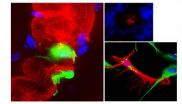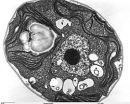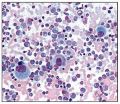(Press-News.org) Leprosy is a bacterial disease that spreads to muscles and other tissues in the body, causing neurodegeneration and muscle weakness. A new study, published by Cell Press January 17th in the journal Cell, reveals that the bacteria responsible for leprosy spread infection by hijacking specialized cells in the adult nervous system, reprogramming them into a stem cell-like state, and converting them to muscle-like cells. These findings could lead to the development of new therapeutic strategies for combating bacterial infections and degenerative diseases as well as new tools for regenerative medicine.
"This is the first demonstration of how a bacterial pathogen could use the genomic plasticity of our adult body tissue cells for generating stem cells naturally during infection," says senior study author Anura Rambukkana of the University of Edinburgh. "Our findings provide new directions for preventing the progression of infection at an early stage and for reprogramming adult tissue cells to stem cells for regenerating damaged tissues in the body."
Leprosy is caused by Mycobacterium leprae (M. leprae), which initially infects adult Schwann cells, cells which usually wrap around nerves to insulate electrical signals passing through, in the peripheral nervous system. The leprosy bacteria must then spread to other tissues to transmit infection, but how they do so has been a long-standing mystery. Because Schwann cells can convert into dedicated repair cells to help adult nerves recover after injury, Rambukkana and his team suspected that M. leprae takes advantage of this remarkable plasticity to spread infection.
To test this idea, the researchers infected adult Schwann cells from mice with M. leprae. The bacteria reprogrammed these cells into a stem cell-like state—in which they're capable of converting into diverse cell types—by turning off genes that are active in the mature form of these cells and turning on genes that are expressed during embryonic development. M. leprae then converted these immature cells into muscle-like cells and spread infection to muscles through this process. When the researchers injected bacteria-laden immature cells into the muscles of adult mice, the bacteria spread to different types of muscle cells.
"Our study shows that host cell reprogramming is perhaps a necessary event in early bacterial infection that promotes the spread of infection," Rambukkana says. "By identifying early molecular targets or diagnostic biomarkers related to the reprogramming process, it will be possible to prevent the progression of infection and thus nerve damage and subsequent disability in patients."
INFORMATION:
Cell, Masaki et al.: "Reprogramming Adult Schwann Cells to Stem Cell-Like Cells by Leprosy Bacilli Promotes Dissemination of Infection."
New insights into how leprosy infection spreads could pave the way for early intervention
2013-01-17
ELSE PRESS RELEASES FROM THIS DATE:
Learning the alphabet of gene control
2013-01-17
Scientists at Karolinska Institutet in Sweden have made a large step towards the understanding of how human genes are regulated. In a new study, published in the journal Cell, they identified the DNA sequences that bind to over four hundred proteins that control expression of genes. This knowledge is required for understanding of how differences in genomes of individuals affect their risk to develop disease.
After the human genome was sequenced in 2000, it was hoped that the knowledge of the entire sequence of human DNA could rapidly be translated to medical benefits ...
Cancer mortality down 20 percent from 1991 peak
2013-01-17
Atlanta– Jan. 17, 2013–As of 2009, the overall death rate for cancer in the United States had declined 20 percent from its peak in 1991, translating to the avoidance of approximately 1.2 million deaths from cancer, 152,900 of these in 2009 alone. These figures come from the American Cancer Society's annual Cancer Statistics report, one of the most widely-cited medical publications in the world.
Each year, the American Cancer Society estimates the numbers of new cancer cases and deaths expected in the United States in the current year and compiles the most recent data ...
How cells know when it's time to eat themselves
2013-01-17
Researchers at the University of California, San Diego School of Medicine have identified a molecular mechanism regulating autophagy, a fundamental stress response used by cells to help ensure their survival in adverse conditions.
The findings are published online in the January 17 issue of Cell.
Senior author Kun-Liang Guan, PhD, a professor of pharmacology at UC San Diego Moores Cancer Center, and colleagues report that an enzyme called AMPK, typically involved in sensing and modulating energy use in cells, also regulates autophagic enzymes.
Autophagy, which derives ...
Drug targets hard-to-reach leukemia stem cells responsible for relapses
2013-01-17
Researchers at the University of California, San Diego School of Medicine have discovered that hard-to-reach, drug-resistant leukemia stem cells (LSCs) that overexpress multiple pro-survival protein forms are sensitive – and thus vulnerable – to a novel cancer stem cell-targeting drug currently under development.
The findings, published in the January 17 online issue of Cell Stem Cell, open the possibility that diseases like chronic myeloid leukemia (CML) and some solid tumor cancers might – in combination with other therapies – be more effectively treated with this ...
Mount Sinai researchers discover how the flu virus tells time
2013-01-17
Scientists have discovered that that the flu virus can essentially tell time, thereby giving scientists the ability to reset the virus' clock and combat it in more effective ways. According to researchers at the Icahn School of Medicine at Mount Sinai, the flu knows how much time it has to multiply, infect other cells, and spread to another human being. If it leaves a cell too soon, the virus is too weak. If it leaves too late, the immune system has time to kill the virus.
The finding provides a novel design platform for the flu vaccine and could lead to new antiviral ...
Deodorants: Do we really need them?
2013-01-17
New research shows that more than 75 per cent of people with a particular version of a gene don't produce under-arm odour but use deodorant anyway.
The study was based on a sample of 6,495 women who are part of the wider Children of the 90s study at the University of Bristol. The researchers found that about two per cent (117 out of 6,495) of mothers carry a rare version of a particular gene (ABCC11), which means they don't produce any under-arm odour.
While about 5 per cent of people who produce an odour do not use deodorant, more than a fifth (26 out of 117) of ...
Gastric banding an effective long-term solution to obesity
2013-01-17
Laparoscopic adjustable gastric banding – lap banding – is a safe and effective long-term strategy for managing obesity, according to the findings of a landmark 15-year follow-up study of patients treated in Australia.
The follow-up study, the longest and most comprehensive yet reported, was published in the Annals of Surgery, and found a significant number of lap band patients maintained an average weight loss of 26 kilograms for more than a decade after their procedure.
Professor Paul O'Brien and colleagues from the Centre for Obesity Research and Education (CORE) ...
'Jet-lagged' fruit flies provide clues for body clock synchronisation
2013-01-17
New research led by a team at Queen Mary, University of London, has found evidence of how daily changes in temperature affect the fruit fly's internal clock.
"A wide range of organisms, including insects and humans, have evolved an internal clock to regulate daily patterns of behaviour, such as sleep, appetite, and attention," explains Professor Ralf Stanewsky, senior study author from Queen Mary's School of Biological and Chemical Sciences.
"Research on animal and human clocks shows that they are fine tuned by natural and man-made time cues, for example the daily ...
Genetic admixture in southern Africa
2013-01-17
This press release is available in German.
An international team of researchers from the MPI for Evolutionary Anthropology in Leipzig and the CNRS in Lyon have investigated the maternally inherited mitochondrial DNA of 500 individuals from southern Africa speaking different Khoisan and Bantu languages. Their results demonstrate that Khoisan foragers were genetically more diverse than previously known. Divergent mtDNA lineages from indigenous Khoisan groups were incorporated into the genepool of the immigrating Bantu-speaking agriculturalists through admixture, and have ...
Study of cancer cell metabolism yields new insights on leukemia
2013-01-17
University of Rochester Medical Center scientists have proposed a new reason why acute myeloid leukemia, one of the most aggressive cancers, is so difficult to cure: a subset of cells that drive the disease appear to have a much slower metabolism than most other tumors cells.
The slower metabolism protects leukemia cells in many important ways and allows them to survive better – but the team also found an experimental drug tailored to this unique metabolic status and has begun testing its ability to attack the disease, URMC researchers report in the Jan. 17, 2013, online ...



